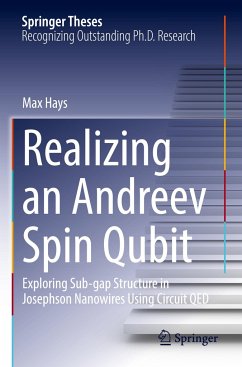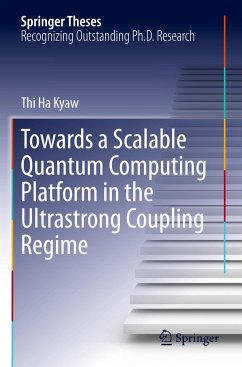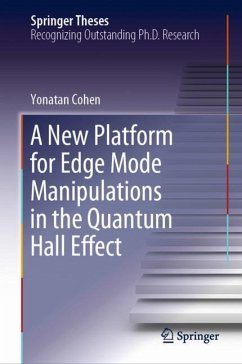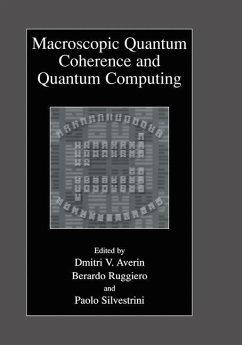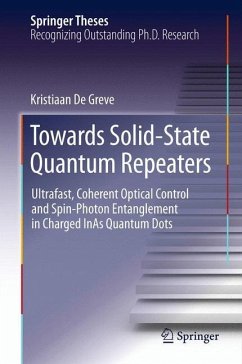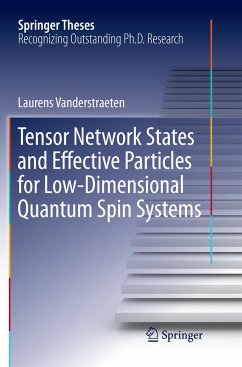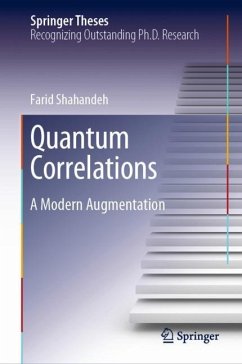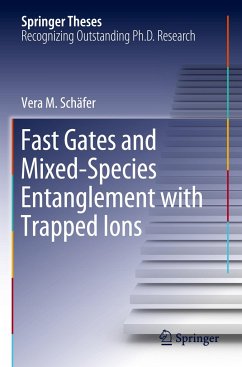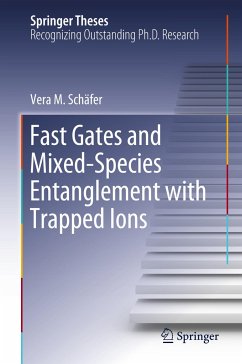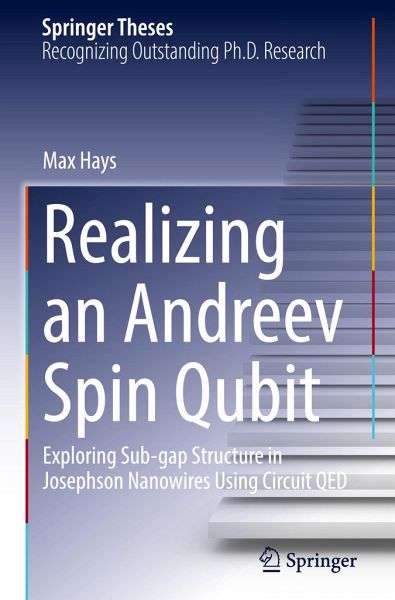
Realizing an Andreev Spin Qubit
Exploring Sub-gap Structure in Josephson Nanowires Using Circuit QED
Versandkostenfrei!
Versandfertig in 6-10 Tagen
121,99 €
inkl. MwSt.
Weitere Ausgaben:

PAYBACK Punkte
61 °P sammeln!
The thesis gives the first experimental demonstration of a new quantum bit ("qubit") that fuses two promising physical implementations for the storage and manipulation of quantum information - the electromagnetic modes of superconducting circuits, and the spins of electrons trapped in semiconductor quantum dots - and has the potential to inherit beneficial aspects of both. This new qubit consists of the spin of an individual superconducting quasiparticle trapped in a Josephson junction made from a semiconductor nanowire. Due to spin-orbit coupling in the nanowire, the supercurrent flowing thro...
The thesis gives the first experimental demonstration of a new quantum bit ("qubit") that fuses two promising physical implementations for the storage and manipulation of quantum information - the electromagnetic modes of superconducting circuits, and the spins of electrons trapped in semiconductor quantum dots - and has the potential to inherit beneficial aspects of both. This new qubit consists of the spin of an individual superconducting quasiparticle trapped in a Josephson junction made from a semiconductor nanowire. Due to spin-orbit coupling in the nanowire, the supercurrent flowing through the nanowire depends on the quasiparticle spin state. This thesis shows how to harness this spin-dependent supercurrent to achieve both spin detection and coherent spin manipulation. This thesis also represents a significant advancement to our understanding and control of Andreev levels and thus of superconductivity. Andreev levels, microscopic fermionic modes that exist in all Josephson junctions, are the microscopic origin of the famous Josephson effect, and are also the parent states of Majorana modes in the nanowire junctions investigated in this thesis. The results in this thesis are therefore crucial for the development of Majorana-based topological information processing.



